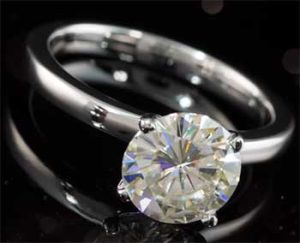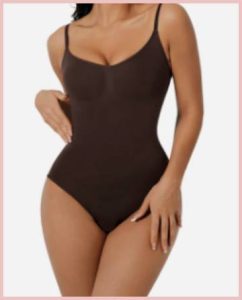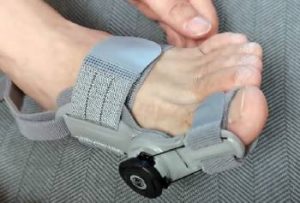I’m no stranger to the sudden, overwhelming heat of a hot flash. It’s like my body decides to crank the thermostat to “inferno” without warning, leaving me flushed, sweaty, and desperate for relief.
For years, I relied on fans, cold drinks, and the occasional ice pack pressed to my wrist, but those fixes were clunky and inconsistent. Then I discovered the Embr Wave, a sleek wristband that promised to cool or warm me at the push of a button.
It sounded like a dream—until I realized it wasn’t perfect for me. The price tag stung, the battery life wasn’t always ideal, and I wondered if there were better options out there. So, I set out on a mission to find Embr Wave alternatives that could keep me comfortable without breaking the bank or my patience.
Here’s what I found, written from my own experience with a dash of curiosity and a lot of testing.
Why Look For Alternatives?
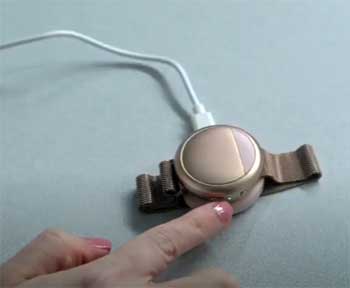
The Embr Wave is a nifty piece of tech.
It uses a thermoelectric heat pump to deliver cooling or warming sensations to the inside of your wrist, tricking your brain into feeling more comfortable.
It’s discreet, stylish, and doesn’t require popping pills or slathering on creams.
But it’s not without flaws. At $299, it’s a hefty investment.
The battery can drain quickly if you’re using it heavily, and some users (myself included) found the cooling effect more localized than we’d hoped.
Plus, the device isn’t waterproof, which is a bummer if you accidentally dunk it in water.
I wanted options that were more affordable, longer-lasting, or offered a different approach to temperature regulation. My goal was to find devices or methods that could match or surpass the Embr Wave’s promise of personalized comfort, especially for hot flashes.
Alternative 1: Kulkuf Cooling Bracelet
First up, I tried the Kulkuf Cooling Bracelet, another wrist-worn device designed to tackle hot flashes. Like the Embr Wave, it’s marketed as a wearable thermostat, but it’s strictly cooling-focused—no warming option here.
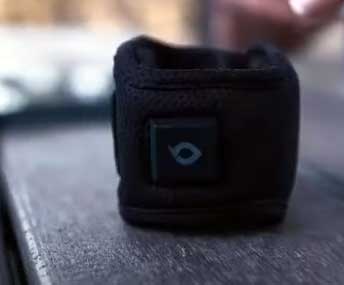
The Kulkuf is a bit cheaper, retailing around $199, which already made me perk up.
It’s battery-operated and promises quick relief by delivering cool pulses to your wrist’s pulse point, much like the Embr Wave’s cooling mode.
When I slipped it on, I was impressed by its lightweight design.
It’s less bulky than the Embr Wave, which made it feel less obtrusive during daily tasks like typing or cooking.
The Kulkuf has three cooling settings, which you control with a single button.
I found the operation straightforward, though I missed the Embr Wave’s companion app for fine-tuning.
The cooling sensation was refreshing, like pressing a cold compress to my wrist, but it didn’t spread through my body as much as I’d hoped. During a particularly intense hot flash, it took the edge off but didn’t fully banish the heat.
The downside? The Kulkuf’s battery life is shorter—about 5-7 hours on a single charge if you’re using it frequently. I also noticed it felt less premium than the Embr Wave; the materials seemed a bit plasticky. Still, for someone who only needs cooling and wants to save a few bucks, the Kulkuf is a solid contender. It’s not a game-changer, but it’s a practical alternative if you’re on a budget.
Alternative 2: Cooling Cuff
Next, I explored the Cooling Cuff, a wristband marketed toward athletes but increasingly popular among menopausal women. Priced around $249, it sits between the Kulkuf and Embr Wave in cost.
The Cooling Cuff uses a similar thermoelectric cooling system, but it’s designed with a sportier aesthetic—think sleek, matte black or silver finishes. I chose the silver one, hoping it would blend with my everyday jewelry.
Wearing the Cooling Cuff felt like strapping on a fitness tracker, which I liked. It’s splash-resistant, so I didn’t worry about it during sweaty workouts or washing dishes, unlike the Embr Wave, which I’d gingerly remove to avoid water damage.
The device has a single cooling mode with adjustable intensity, controlled by a small dial. I found the cooling effect more intense than the Kulkuf’s, almost like holding an ice cube to my wrist. During a hot flash, it provided noticeable relief, though, like the Kulkuf, it was mostly localized to my wrist.
What set the Cooling Cuff apart was its focus on durability. It’s built to withstand active lifestyles, which gave me confidence it wouldn’t break if I bumped it during a walk or gym session. However, the battery life was a mixed bag—around 8 hours on moderate use, which meant I had to charge it daily.
It also lacks the Embr Wave’s warming feature, which I missed on chilly days. For active folks or those who want a rugged cooling option, the Cooling Cuff is worth a look, but it’s not as versatile as the Embr Wave.
Alternative 3: Cool On the Go Personal Fan
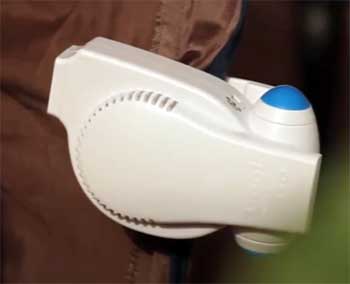
Sometimes, the simplest solutions are the most effective.
That’s what I thought when I picked up the Cool On the Go Personal Cooling System, a small, rechargeable fan that clips onto your clothing or sits on a desk.
At around $30, it’s a fraction of the cost of the Embr Wave, and I was curious to see if a budget-friendly option could compete with high-tech wristbands.
This little fan is a lifesaver in a pinch.
I clipped it to my shirt collar during a hot flash, and the steady breeze felt like a mini air conditioner.
It’s hands-free, which meant I could keep working or reading without holding anything.
The fan has three speed settings, and even the lowest one was enough to cool my face and neck. I also loved that it’s portable—I tossed it in my purse for commutes or outdoor events.
But let’s be real: it’s not as discreet as a wristband. People noticed the fan, and I got a few curious glances at the grocery store. It’s also noisier than the silent Embr Wave, which could be a dealbreaker in quiet settings like meetings.
The battery lasts about 5 hours on high speed, which is decent but requires regular recharging. For hot flash relief on a budget, the Cool On the Go is fantastic, but it’s not a direct replacement for the Embr Wave’s subtle, wearable approach.
Alternative 4: Menopause Cooling Patches
I wasn’t sure what to expect when I tried menopause cooling patches, specifically a brand called Cooling Comfort Sleep Patches. These adhesive patches are designed to stick to your skin (I placed mine on my neck or chest) and provide a cooling sensation for up to 8 hours.
A pack of 30 costs around $25, making them another wallet-friendly option.
Applying the patch was easy, and the cooling effect kicked in within minutes. It felt like a menthol-based gel, soothing and chilly without being overwhelming. During a hot flash, the patch helped calm the heat in my upper body, though it didn’t target my wrists like the Embr Wave.
I also liked that I could wear it under my clothes without anyone noticing, unlike the fan. The patches are single-use, which is convenient for travel but less eco-friendly than a rechargeable device.
The biggest drawback was the adhesive. It left a sticky residue on my skin, and I had to be careful not to place it on sensitive areas. Some patches also lost their cooling power faster than advertised, especially in humid conditions.
For occasional use or nighttime relief, these patches are a great low-cost alternative, but they lack the on-demand control of the Embr Wave.
Alternative 5: Provitalize Probiotics
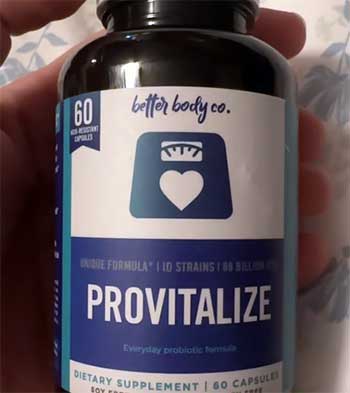
I decided to venture beyond wearables and try a supplement called Provitalize, marketed as a holistic menopause solution.
At about $50 for a month’s supply, it’s not a direct competitor to the Embr Wave but aims to reduce hot flashes through a different mechanism: supporting gut health with probiotics.
I was skeptical—could a pill really cool me down?
Provitalize contains a blend of probiotics, herbs like turmeric, and ingredients like moringa leaf, which claim to balance hormones and reduce inflammation.
I took two capsules daily, as recommended, and tracked my hot flashes over a month.
By week three, I noticed a slight decrease in the frequency of my hot flashes, though the intensity didn’t change much.
It wasn’t the instant relief I got from the Embr Wave’s cooling button, but it felt like a more systemic approach, tackling the root causes rather than just the symptoms.
The catch? Supplements take time to work, and results vary widely. I also had to pair it with lifestyle changes, like avoiding spicy foods, to see any effect. Unlike the Embr Wave, there’s no immediate “ahh” moment, and you’re committing to daily pills.
Still, for those who prefer a natural, non-wearable option, Provitalize is worth considering, especially if you’re already into supplements.
Alternative 6: DIY Cooling Methods
Before I invested in any more gadgets, I decided to revisit some DIY methods I’d used in the past. These aren’t products per se, but they’re practical, low-cost alternatives to the Embr Wave. My go-to was a chilled washcloth pressed to my wrists or neck during a hot flash.
It’s free, effective, and mimics the Embr Wave’s cooling principle—targeting pulse points to trick your brain into feeling cooler.
I also experimented with keeping a reusable ice pack in my bag for on-the-go relief. It worked well but was less convenient than a wristband; I had to hold it in place, and it wasn’t exactly discreet.
Another trick was sipping ice-cold water slowly, which helped cool me from the inside out. These methods are dirt cheap and accessible, but they lack the Embr Wave’s portability and ease of use. Plus, you’re at the mercy of having a freezer or sink nearby.
Comparing The Alternatives
Each alternative I tried had its strengths and weaknesses. The Kulkuf and Cooling Cuff are the closest to the Embr Wave in terms of technology, offering wearable, on-demand cooling. The Kulkuf is more affordable but less polished, while the Cooling Cuff is sturdier but lacks warming capabilities.
The Cool On the Go fan is a budget-friendly powerhouse for immediate relief, though it’s not subtle. Cooling patches are discreet and cheap but less controllable, and Provitalize takes a long-term approach that might not suit everyone. DIY methods are great in a pinch but can’t match the convenience of a dedicated device.
For me, the ideal alternative depends on the situation. If I’m at home, the fan or a chilled washcloth does the trick. For work or social settings, the Cooling Cuff’s sleek design wins. If I want to tackle hot flashes holistically, Provitalize is a good complement, though it’s not a quick fix.
None of these fully replicate the Embr Wave’s dual cooling-and-warming feature, but they offer compelling trade-offs.
My Personal Takeaways
After testing these alternatives, I’ve learned that no single solution is perfect. The Embr Wave’s biggest strength is its versatility—cooling or warming on demand, with a user-friendly app to customize settings. But its price and battery life pushed me to explore other options.
The Kulkuf and Cooling Cuff are solid for cooling-focused relief, especially if you don’t need the warming feature. The fan and patches are great for budget-conscious folks, while Provitalize appeals to those who prefer a natural approach.
What surprised me most was how much context matters. A wearable device like the Embr Wave or Cooling Cuff shines when I’m out and about, but at home, I’m just as happy with a fan or washcloth. The key is finding what fits your lifestyle, budget, and tolerance for tech.
I also realized that combining methods—like using a cooling patch at night and a wristband during the day—can maximize relief.
Frequently Asked Questions (FAQ)
“Better” depends on your needs. If you want a cheaper wearable, the Kulkuf Cooling Bracelet ($199) is a solid pick, though it only cools and feels less premium. For a more durable option, the Cooling Cuff ($249) is great for active lifestyles but lacks warming. Budget-conscious folks might prefer the Cool On the Go fan ($30) for instant relief, though it’s less discreet. Cooling patches ($25 for 30) are great for nighttime, and Provitalize ($50/month) offers a holistic approach but takes time. Each has trade-offs, so it’s about prioritizing cost, convenience, or versatility.
From my experience, yes, it works, but it’s not a miracle cure. The Embr Wave delivers cooling pulses that take the edge off hot flashes by targeting your wrist’s thermoreceptors. I felt relief within minutes, but the effect was mostly localized to my wrist and didn’t always cool my whole body. It’s most effective when used at the first sign of a hot flash, and the app’s customizable modes (like “Hot Flash” or “All Night”) help. Some users report better results after a few weeks, as their body adjusts.
The Embr Wave is the most versatile wrist device, offering both cooling and warming. For cooling-only options, the Kulkuf Cooling Bracelet is affordable and lightweight, though its battery life is shorter. The Cooling Cuff is another strong choice, especially for active users, with a more intense cooling effect and splash resistance. Both are effective for hot flashes but don’t match the Embr Wave’s dual functionality or app integration.
Yes, the Embr Wave works without a subscription. You get full access to its core features—cooling and warming modes, adjustable intensity, and preset sessions—right out of the box. The free companion app enhances customization, letting you tweak settings or track usage without any paywall. There’s no ongoing cost beyond the initial $299 purchase, though you might need to buy replacement bands or a charger if they wear out.
Wrapping It Up
My search for Embr Wave alternatives taught me that relief from hot flashes doesn’t have to come from one device. Whether it’s the tech-savvy Cooling Cuff, the budget-friendly Cool On the Go fan, or even a simple chilled washcloth, there’s something out there for everyone.
The Embr Wave remains a standout for its dual functionality and sleek design, but its alternatives offer unique benefits that might better suit your needs. I’m still experimenting, mixing and matching these solutions depending on the day.
If you’re struggling with hot flashes or temperature swings, I hope my journey gives you a starting point to find your own cool, calm, and collected.

